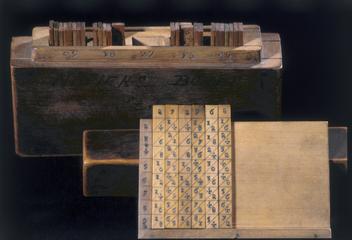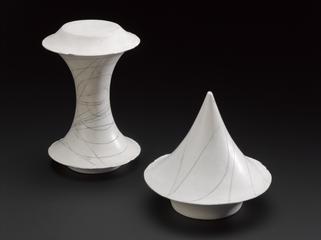
A mathematical quilt, 1991
- Made:
- 1991 in United States, Indiana and West Lafayette




Sierpinski Triangles mathematical quilt, inspired by Benoit Mandlebrot's work on fractal geometry, made by Elaine Krajenke Ellison, 1991.
The Sierpinski triangle challenges our firm belief that if something is real it is measurable. Waclaw Sierpinski was a Polish mathematician particularly known for his work on set theory and topology. In 1915 he described this basic self-similar set, a mathematically generated pattern that has the property that any part is the same as the whole, so it can be reproduced at any magnification or reduction. In 1967, Benoît Mandelbrot, well known for his work on fractals, linked Sierpinski’s triangle with the British coastline: the more you magnify it, the longer it becomes.
Details
- Category:
- Mathematics
- Object Number:
- 2000-1088
- Measurements:
-
overall: 5 x 1040 x 1040 mm
- type:
- quilts and mathematical quilts
- credit:
- Ellison, Elaine Krajenke




